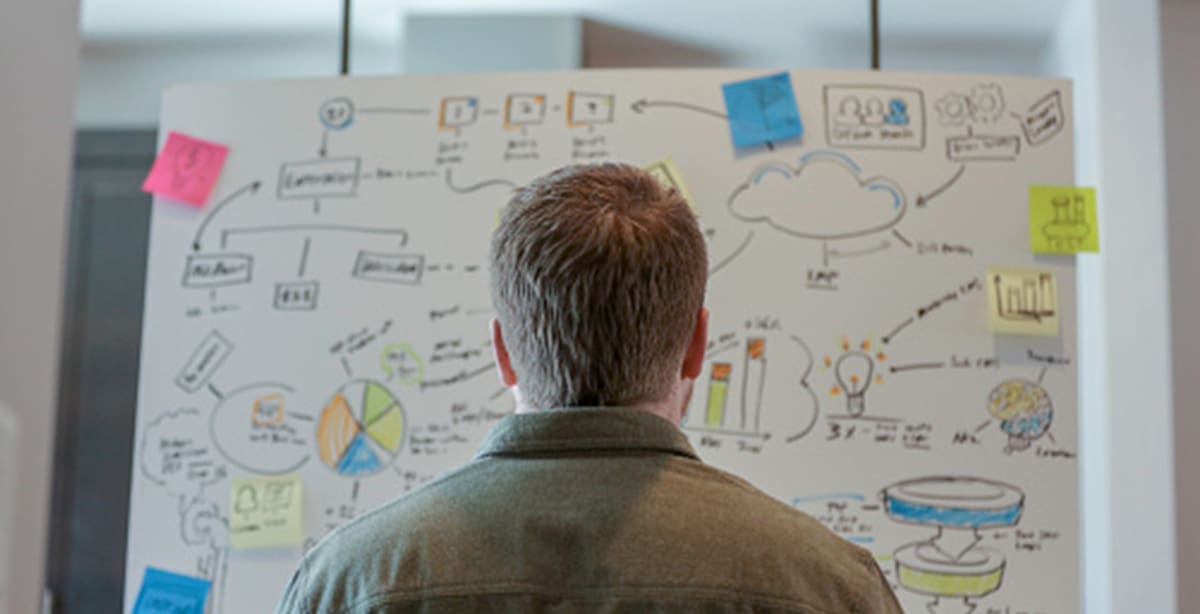In every successful business, customers embark on a “path to purchase” that begins when they first learn about a product or service and — if subsequent marketing efforts are successful — eventually leads to a sale. Marketing pros know this path as the “marketing funnel” — and it consists of stages ranging from a customer’s initial discovery of the offering (“awareness”) through to the customer actually buying it (“purchase”).
(Side note: From The Brandon Agency’s perspective, the ideal marketing funnel doesn’t end when the sale is completed. To maintain even stronger revenues, brands should add “loyalty” and “advocacy” stages to the end of their marketing funnel — after all, acquiring a new customer can cost anywhere from five to 25 times as much as keeping a current one. But we digress …)
Of course, each stage of the marketing funnel calls for a different type of messaging, as communicating with someone who’s never heard of your product or service requires a drastically different approach than speaking to someone who is making final decisions regarding which product model or service level best suits their needs/desires. Here, we’ll discuss all of the different stages of the marketing funnel and which types of communication/content are the best fits for each.
The Marketing Funnel
The origins of the marketing funnel — also known by alternative names such as the purchase funnel, the sales funnel, the sales pipeline and the conversion funnel, just to name a few — date back to the late 19th century. That’s when, in 1898, American advertising advocate and (posthumously inducted) Advertising Hall of Fame member Elias St. Elmo Lewis first came up with the AIDA model, which articulates a consumer’s typical path to purchase. The acronym AIDA represents the stages in the process Lewis outlined:
Awareness — the consumer becomes aware that a product or service exists
Interest — the consumer develops an active interest in the offering
Desire — the consumer aspires to attain the product or service
Action — the consumer takes steps toward acquiring the product or service
While the model has subsequently seen a number of modifications and variations to accommodate for evolutions in the marketplace, most modern-day models of the consumer journey are still based on Lewis’ AIDA model.
The marketing funnel we’ll discuss here adds in a few stages, but you’ll recognize the clear resemblance to the AIDA model outlined above. It, too, begins with awareness and makes its way to purchase (with a couple subsets added in), then adds two additional stages to account for customer retention and — the holy grail of marketing, in our minds at least — brand ambassadorship.
Here’s the marketing funnel we use to evaluate our clients’ purchase paths at The Brandon Agency:
Awareness > Consideration > Conversion (Purchase) > Loyalty > Advocacy
The Best Content Type for Each Stage
As marketers and business owners know, the path to purchase can sometimes be a challenging one. And it could be argued that the internet age has made the journey even more treacherous, considering that — in the overwhelming majority of cases — consumers have many more vendor options to choose from than they did in past eras.
But the glass is also half-full — while today’s competition for customers is typically more fierce than in previous business eras, there are also many more opportunities to communicate with today’s consumers along their purchase journeys than there were in days past. Among the biggest keys to success — sending the right messages to the potential customer at the right times.
To further this goal, let’s take a deep dive into each stage of our marketing funnel, then evaluate the range of effective content types available to marketers for each funnel phase and, lastly, identify a top content type for each while examining why it’s such a good fit.
Stage 1: Awareness
Also known as the “discovery” phase of the marketing funnel, this topmost stage seeks to capture consumers’ attention and make them aware of your offering’s existence. To learn just which demographics might be most inclined to consider their offerings, brands would be well-advised to learn more about their target customers via surveys, research and questionnaires, as this info can inform their ad targeting, etc. This is also a great time to capture consumer information if possible — so that the leads can be nurtured moving forward through the funnel.
- Most effective content — In this initial awareness phase, consumers have either not yet seen your brand or are not aware of why they should choose you. The best content for this stage simply conveys who you are, what sets you apart and what problem you solve for the consumer. At this stage, marketing that can elicit an emotional response from a potential consumer is ideal, as this increases the chance that the consumer will remember who you are and what you can do for them. Video content is also a strong choice in this phase, as it allows you to get more of your message in front of consumers in a short period of time.
- PR and Social Media — PR is an incredible way to spread the word. According to a Nielson study, PR is up to 90% more effective than advertising in the consumer decision-making process. Social media is another stalwart, top-of-the-funnel tactic. In fact, 77% of Pinterest users (300 million) have discovered a new brand on the platform.
Stage 2: Consideration
This stage of the funnel sees consumers actively considering the offering, and marketers can legitimately see these prospects as potential customers. Here, consumers begin to directly associate a brand with the solution it offers. While it’s unlikely that the brand has gained the consumer’s trust yet (so it’s a bit early for any hard sales tactics), it’s a great time to strengthen the relationship by sending prospects more information about the product or service being considered and why it’s a great answer to meet their needs, along with promotional offers that might move the needle.
- Most effective content — In this stage of the consumer journey, consumers are actively considering a brand’s product or service. The messaging at this level could include demos of product, and a powerful CTA tactic at this stage is to invite consumers to a brand’s website — allowing them to browse what the brand has to offer and to really start forming purchasing decisions. Images and video both work very well at this stage of the campaign.
- SEM — Here is where all your content-development and SEO efforts will start to pay dividends. It’s critical to your business that you can be discovered by people who are actively seeking the type of product or service you offer. Loading up your website with content that is relevant, informative and set up in a way such that the search engines like it will help potential customer find you — and will bring them one, critical step closer to purchasing. What you can’t achieve with organic search, you should address with paid search advertising (PPC).
Stage 3: Conversion (Purchase)
This stage, of course, is the one marketers work so hard to reach — when the prospect actually makes the purchase and officially turns into a customer. While some might consider this the end of the marketing journey, it’s important for brands to continue to nurture the customer relationship even beyond this point. A positive purchase experience and proceeding through the stages below are crucial to moving consumers farther along the funnel toward becoming brand ambassadors.
- Most effective content — This stage is where the brand pushes hard to get the consumer to make the purchase. The consumers brands are reaching at this stage should be those who’ve already hit stages one and two in the funnel, so they’re already warm leads. The CTA at this stage should always be Buy Now, Purchase Now, Sign Up Today, etc. — whatever most quickly drives the consumer to conversion. We have found that images are especially effective at this stage of advertising, as ready-to-convert consumers have already seen your brand and videos in the earlier stages.
- Website optimization — Considering all the hard work it took to get your prospects this far into the funnel, you’ll want to make sure your website and landing pages are optimized for conversion. Aside from the best practices in UX, you should routinely be conducting A/B and multivariate testing on your most important, high-value pages.
Stage 4: Loyalty
In the loyalty stage, brands seek to stay in touch with their buying customers in hopes of ensuring they’re pleased with the product or service, and maybe even making them repeat customers down the road. Retention is the name of the game here.
- Most effective content — We all know it costs a lot less to keep a customer than to find a new one. There are many ways to nurture this new relationship, and email marketing is a great way to start. Email always tops the list of ways that consumers prefer to receive marketing communications. At a minimum, you should have a set of automated emails set up to deliver following a purchase. Provide your customers with helpful, useful information, and look for ways to bring them into your community.
- Reputation management — This is a great opportunity to support your reputation management efforts. 97% of consumers consult product reviews prior to purchase, and reviews are important to search engines as well. Take this post-purchase opportunity to solicit reviews, and actively address consumer feedback through email and social media channels to head off potentially negative reviews.
Stage 5: Advocacy
To get a prospect to this stage of the marketing funnel, a brand must turn a customer from a user of its product or service into a true fan. If this can be achieved, the brand stands to reap the rewards of word-of-mouth recommendations, glowing customer reviews, social shares, etc.
- Most effective content — Congratulations! You’ve landed a customer, and they have opted into your marketing funnel, asking you to tell them more about your brand/product and keep them informed via email and social media channels. This is the very lifeblood of your business. Use email marketing and social media to provide your fans with exclusive information and special offers. Carefully segment your email list, and respect the permissions you have been granted to communicate with these customers!
- Customer loyalty — Establishing an active, engaged community is the ultimate goal of your marketing efforts. Every community needs leadership, and your customers’ trust should not be squandered. Adding value post-purchase and nurturing this community should receive just as much attention as your top-of-the-funnel efforts.
Could your brand use some expert help in attracting, retaining and converting website visitors? At The Brandon Agency, our fully integrated marketing firm boasts a team of seasoned specialists who can cover digital marketing efforts and plenty more — including web design, brand strategy, creative, interactive, social media, analytics, conversion rate optimization and SEO — all in one place. To get started with help ranging from a simple website analysis to a comprehensive strategy tailored to boost the performance of all of your marketing campaigns, contact us today.

